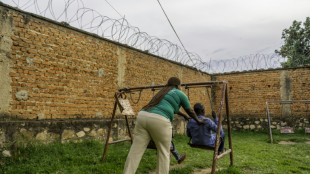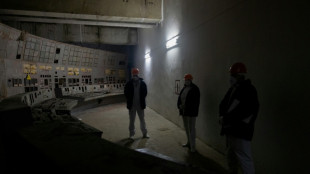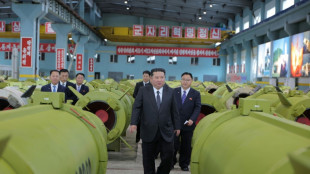Historic Swedish church to relocate on trailers in logistical feat
With great fanfare, a historic red wooden church considered one of Sweden's most beautiful buildings is to be moved Tuesday from its longtime home in the Arctic town of Kiruna to allow the expansion of Europe's biggest underground mine.
Kiruna Kyrka, a Swedish Lutheran church, dates from 1912, but the 672-tonne building will be moved five kilometres (three miles) on remote-controlled flatbed trailers on Tuesday and Wednesday, inching along at a pace of half-a-kilometre an hour to the new Kiruna town.
The complex and costly logistical operation, which is due to begin at 8:00 am (0600 GMT) after a blessing, has generated widespread interest, with more than 10,000 people expected to line the streets of the town of 18,000 people.
King Carl XVI Gustaf will be among those in town following the move. Swedish television will broadcast the entire journey live -- a new iteration of the "slow TV" trend -- with 30 cameras set up along the route, it said.
Kiruna's entire town centre is being moved because of the giant LKAB iron ore mine that dominates the region, but whose ever deeper burrowing over the years has weakened the ground, increasing the risk of collapse in some parts.
- Unique event -
The town's relocation process began almost two decades ago and is expected to continue for years to come. The new town centre was officially inaugurated in September 2022.
The relocation of the church alone is expected to cost 500 million kronor ($52 million) and is being paid for by LKAB.
Designed by Swedish architect Gustaf Wickman, the imposing structure, which measures 40 metres (131 feet) tall, is a mix of influences and includes designs inspired by the region's Indigenous Sami people on the pews.
The neo-Gothic exterior features slanting roofs and windows on each side, while its dark interior has elements of national romanticism as well as an Art Nouveau altarpiece.
The church is one of 23 cultural buildings relocated in the Kiruna move. LKAB has called the relocation "a unique event in world history".
Other larger, heavier objects have been moved before, but usually in ports or industrial areas -- not through small towns.
The roads on the route have been widened, from nine to 24 metres, and levelled to provide a smooth ride, a process that took a year, according to LKAB.
The company offered to either financially compensate everyone affected by the town's relocation, or to rebuild their homes or buildings.
"But when it came to the church, we decided it was best to move it in one piece. We saw the value in that," LKAB project manager Stefan Holmblad Johansson told AFP.
"It is with great reverence we have undertaken this project," he said.
"This is not just any building, it's a church."
The structure has been "thoroughly examined ahead of the move to protect its cultural assets in the best possible way, to ensure that the altarpiece and organ in particular are moved with care," the company said.
Both the altarpiece -- painted by Sweden's Prince Eugen (1865-1947), a pastel landscape inspired by his trips to Italy's Tuscany and western Sweden -- and the large organ with its more than 2,000 pipes have been meticulously wrapped and protected for the journey.
The ground around the church's current location has been dug out, allowing big beams to be placed underneath so it could be jacked up.
"The church is sitting on a beam system, then two rows of trailers were brought in" and slid underneath the beams, Holmblad Johansson explained.
When it pulls out on its journey on Tuesday, the entire load will weigh 1,200 tonnes, according to LKAB.
The belltower, which stands separately next to the church, will be moved next week.
Tuesday's move is expected to take on the air of a street party, with LKAB treating crowds to snacks, refreshments and live entertainment.
B.Brun--JdCdC



